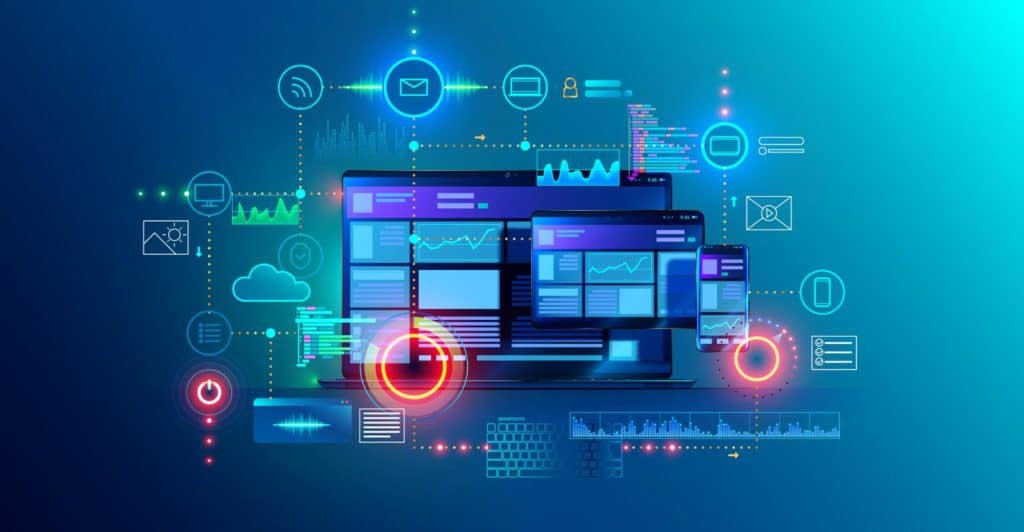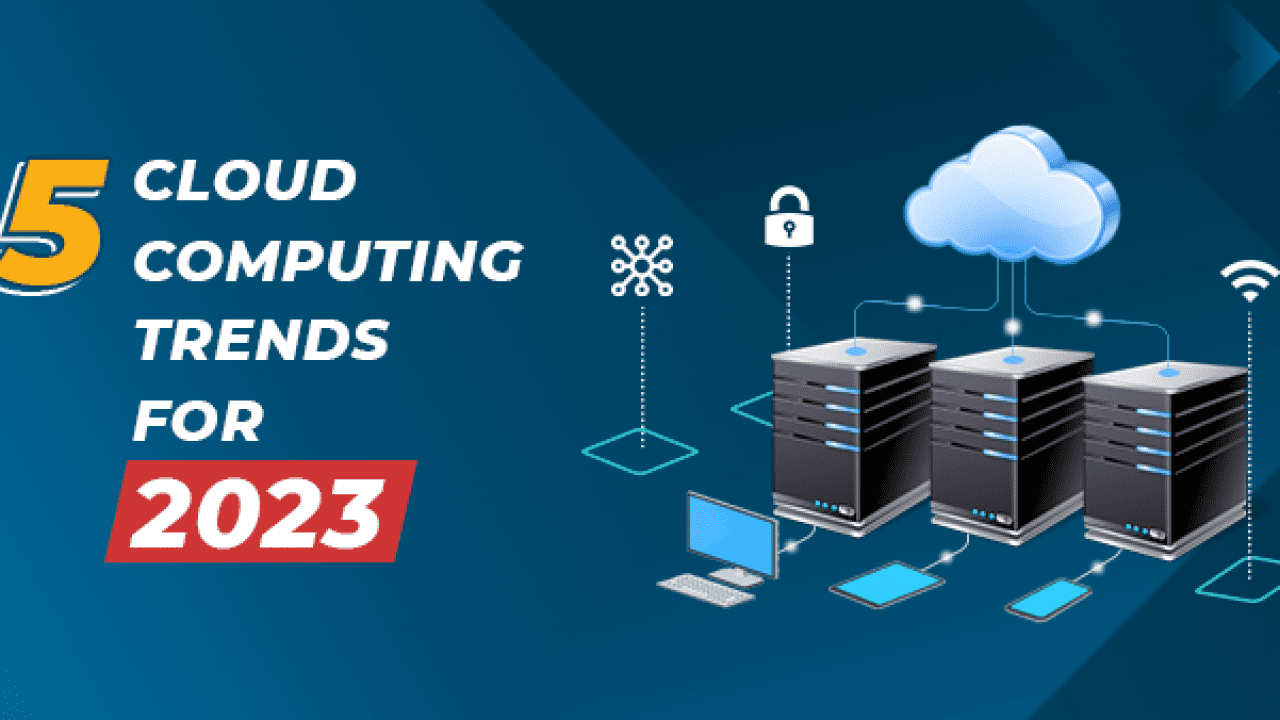Trends In Cloud Computing For 2023
Many of the most revolutionary technological developments, such as artificial intelligence (AI), the internet of things (IoT), and remote and hybrid working, have been made possible by the widespread use of cloud computing. We may anticipate it enabling many more innovations in the future, such as quantum computing, the metaverse, cloud gaming, and virtual and augmented reality (VR/AR).
Cloud computing makes this possible because it eliminates the need to spend money on purchasing and maintaining the pricey infrastructure necessary for these demanding computer applications. Instead, it is made available “as-a-service” by cloud service providers, who execute it on their servers and data centers. It also implies that businesses that wish to benefit from these ground-breaking technologies may, to some extent, avoid the trouble of finding or training a highly skilled workforce.
Top Trends in Cloud Computing
We can anticipate that businesses will continue to use cloud services in 2023 to access cutting-edge technology and increase efficiency in their workflows. Following is a list of some of the trends that, in the opinion of our experts, will have the greatest influence:
1. Increased investment in cloud security and resilience:
Large potential, efficiency, and convenience come with cloud migration, but it also exposes businesses and organizations to a new set of cybersecurity vulnerabilities. Cloud migration in banking has revolutionized the industry’s digital infrastructure, enhancing scalability and data accessibility while reinforcing cybersecurity measures. Furthermore, the possibility of fines or, even worse, losing the confidence of their clients is a serious issue because of the rising body of regulations governing how businesses can hold and use personal data.
“Spending on cyber security and increasing resilience against anything from data loss to the effects of a pandemic on international trade will thus take on even greater importance in the upcoming year. To get the most “bang for the buck,” organizations will likely focus on finding creative and economical methods to maintain cyber security as they attempt to cut expenses in the face of a predicted economic slump. In 2023, this will translate into increased usage of managed “security-as-a-service” providers as well as AI and predictive technologies aimed to identify dangers before they create issues” says Andrew Dale, the Technical Director at CloudTech24
2. Multi-cloud is an increasingly popular strategy:

If 2022 was the year of hybrid cloud, then 2023 may be when companies start to see the benefits of distributing their services among several cloud providers. This method, known as a multi-cloud one, has several benefits, including increased flexibility and security. Additionally, it protects businesses from becoming overly reliant on a single ecosystem, which might pose problems if cloud service providers cease supporting a certain application or modify the apps they now support. Additionally, it contributes to the development of redundancy, which lowers the likelihood that downtime or system problems may have a catastrophic impact on corporate operations.
“Adopting a multi-cloud infrastructure involves eschewing potentially harmful business practices like designing apps and procedures only for a single cloud platform, such as AWS, Google Cloud, or Microsoft Azure. Because containerized applications are becoming more and more popular, they may be swiftly transferred to other platforms if service levels change or more affordable solutions become available from various providers” asserts Josh Thill, Founder of THRIVE ENGINE. In contrast to the majority of businesses (70%) claims that they were still dependent on a single cloud service provider in 2020, research indicates that 84% of mid-to-large businesses will have adopted a multi-cloud strategy by 2023, making it one of the year’s most significant trends in cloud computing. A holistic cloud optimization strategy aligns technology with business objectives across cloud environments.
3. The AI and ML-powered cloud:
According to Tim Parker, Director of Marketing at Syntax Integration “Due to the limited resources available to organizations to develop their own AI infrastructure, cloud services for artificial intelligence (AI) and machine learning (ML) are offered. Large quantities of computational power and storage space are needed for data collection and algorithm training, and renting these resources as a service is typically more cost-effective. More and more, cloud service companies are using AI internally for a variety of purposes. This involves running the enormous, dispersed networks required to supply storage resources to their clients, controlling the cooling and electricity systems in data centers, and supplying the cyber security tools that protect their data. As hyper-scale cloud service companies like Amazon, Google, and Microsoft continue to implement their own AI technologies to provide more effective and affordable cloud services for their clients, we may anticipate seeing further innovation in this area in 2023.”
4. Low-code and no-code cloud services:

“People are becoming more and more interested in tools and platforms that let anyone build applications and utilize data to solve issues without having to write any code. This group of low-code and no-code solutions includes programs for creating websites, web apps, and virtually any other type of digital product that a business would want”, says Ethan Bull, Owner of ProAssisting. “The entry hurdles for businesses looking to use AI and ML are being significantly reduced by the availability of low-code and no-code options for building AI-powered apps. Many of these services may be accessed as-a-service by customers without their needing to own the robust computer equipment required to run them themselves since they are offered via the cloud. Designing websites, automating spreadsheet tasks, and creating web applications are just a few examples of tasks that users can now complete without the need for coding expertise thanks to tools like Figma, Airtable, and Zoho. In my opinion, this is an area where cloud technology will continue to prove itself useful through the year 2023 and beyond.” Ethan adds.
5. Innovation and consolidation in cloud gaming:
We now watch movies, watch TV, and listen to music differently thanks to streaming services like Netflix and Spotify that the cloud has brought us. With Microsoft, Sony, Nvidia, and Amazon all providing services in this area, streaming video gaming is certainly on its way to becoming more popular but is still gaining traction. Though not everything has been smooth sailing; Google invested millions of dollars in the Stadia streaming gaming service before retiring it last year owing to a lack of demand. One of the issues is the networks themselves; because streaming video games uses more bandwidth than streaming music or films, it is only possible for those of us with a high-speed internet connection, which is still a small percentage of the population.
“Cloud gaming may start to take off in 2023 as a result of the continued implementation of 5G and other extremely fast networking technologies, which should finally find a solution to this issue. According to Google, the technology that underpins Stadia will continue to exist as the foundation of a B2B game streaming service that is currently being developed and will enable game creators to offer streaming features directly to their consumers. If cloud gaming turns out to be the “killer app” for 5G in the same way that streaming video and music were for 4G and 3G, respectively, then 2023 may be the year that everything starts to come together” says Adam Crossling, Head of Marketing at Zenzero.
Read More: 6 Best Marketing Automation Tools & Platforms To Stay Competitive in 2023



